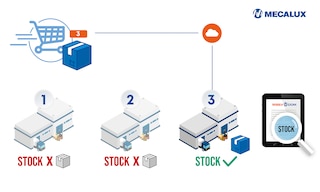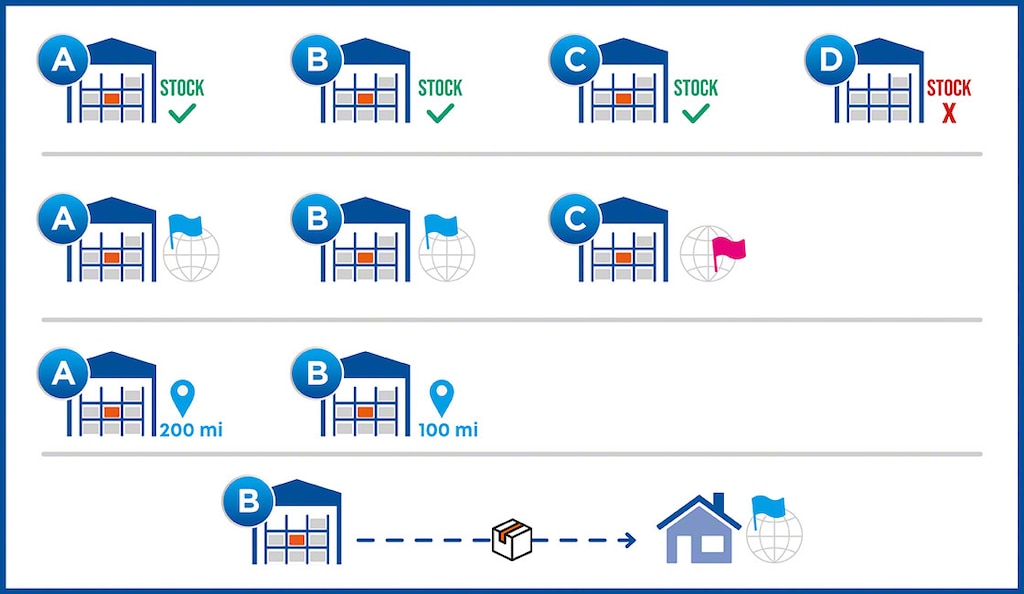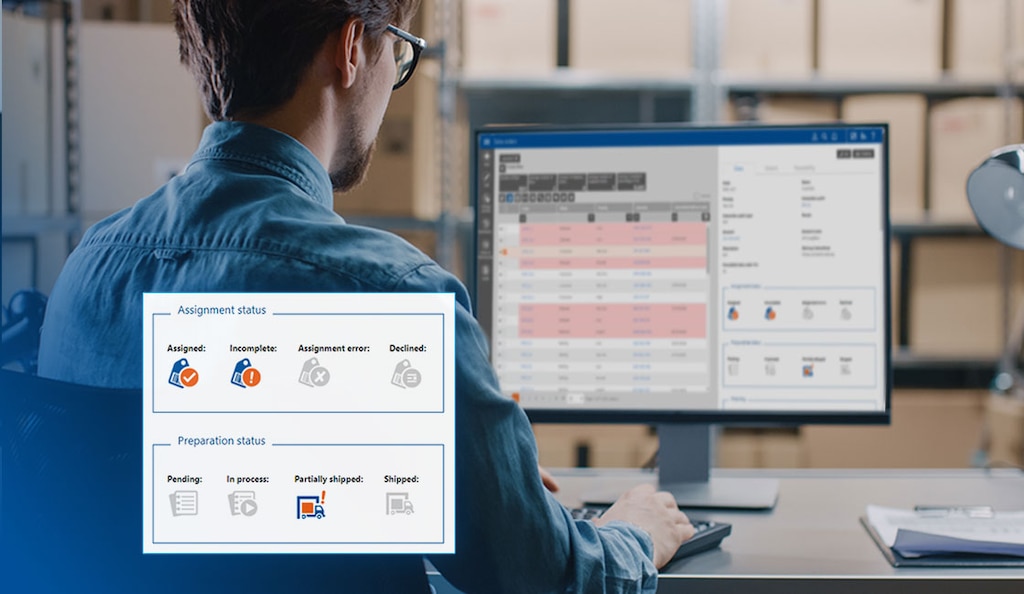
Order routing: software as an ally for omnichannel logistics
Processes like order routing facilitate the logistics challenge of getting closer to customers, which is becoming increasingly complicated as businesses grow.
What is order routing in logistics?
Order routing is the process of sending items from warehouses or distribution centers (DCs) based on a series of preferences. It aims to ensure delivery is performed as soon as possible and at the lowest operational costs. Similarly, order orchestration — highly advantageous for following the omnichannel strategy — aligns with business model demands to maximize benefits.
Distributed order management (DOM) systems facilitate order routing by automatically assigning orders to the ideal shipping locations. They do this through preconfigured prioritization rules relating to stock and workloads, for instance.
What configurations does order routing have?
Depending on your priorities, you can establish different rules to optimize your supply chain. The programs with the most customization options will allow you to define supply locations and fulfillment costs, prioritize customer types, and segment by countries, zip codes, and coordinates. That said, these are some of the most common order routing options:
- Shipment from the closest location. It’s possible to calculate the nearest stores or centers and prioritize the closest one, resulting in benefits for your company. Likewise, shorter delivery times contribute to better user experiences.
- Remain in the target market. A warehouse can be within the scope of a destination but belong to a different country. With DOM software, you can also define geographic regions and segment by countries, zip codes, or specific coordinates. This avoids taxes and cross-border payments that could drive up costs or require packages to be transferred from one distribution business to another.
- Minimize multiple shipments. Companies with several warehouses can’t always fulfill an order from the same center because it might not have all the items in stock. With an order routing system, you can have the facility with the majority of the items complete the order, simplifying the process.
- Prioritize locations. Routing rules enable you to give precedence to some locations over others. You may prefer to empty shelves in a leased warehouse that charges for space usage than in one you own. Alternatively, it might be more practical to use a distribution center instead of shipping products on display at a point of sale. To do this, you would establish a hierarchy that the software can follow.

Example of order routing
Considering the criteria mentioned above, the following is a case of order routing for a pick list containing five items:
- A company has four warehouses. A, B, and C have all five products in stock, but D is missing one. Therefore, it’s excluded from being a possible order recipient.
- A and B are in the same country as the end customer, but C is across the border. C is eliminated as a candidate to avoid cost overruns.
- Given that the company has programmed its DOM system to prioritize the location nearest the customer, it chooses warehouse B, which is closer to the destination than A.
You can also establish other criteria, for example, if you have products with expiration dates that require frequent turnover.
Advantages of order routing
Taking time to make decisions relating to the characteristics of your shipments and the locations where they’re fulfilled brings numerous benefits:
- Scalability. Routing systems are easily extensible to new stores and logistics centers. Plus, their criteria can be modified quickly.
- Customer experience. You’ll improve service by shortening lead times and minimizing shipping costs.
- Customization. Routing can be tailored to the characteristics of each industry or item. This way, an order can be fulfilled from different locations depending on whether the merchandise needs to be gift-wrapped, is perishable, or has a specific delivery date.
Ultimately, for businesses with high demand volumes, managing each order manually is inefficient. Using DOM software to automate this task allows fulfillment teams to get started as quickly as possible.

How does order routing work?
The best order routing systems are integrated and synced with the numerous supply chain actors (warehouses, stores and marketplaces, ERP systems, 3PL service providers, shipping agencies, call centers, etc.). This multilevel and omnichannel integration makes managing complex scenarios much easier. Orders are assigned automatically according to preset prioritization rules, and the program provides global stock visibility for each item.
Software for order routing
Looking to centralize supply chain management across your various DCs with large daily shipping volumes? At Interlake Mecalux, we can help. Contact us to see what Easy DOM can do for you. Our distributed order management system is cloud-deployed, simplifying order shipment while enabling greater flexibility. At the same time, it boosts operational efficiency and cost-effectiveness. With Interlake Mecalux, you’ll have the support of over 400 engineers dedicated to developing software solutions and a company specializing in warehousing since 1966.
